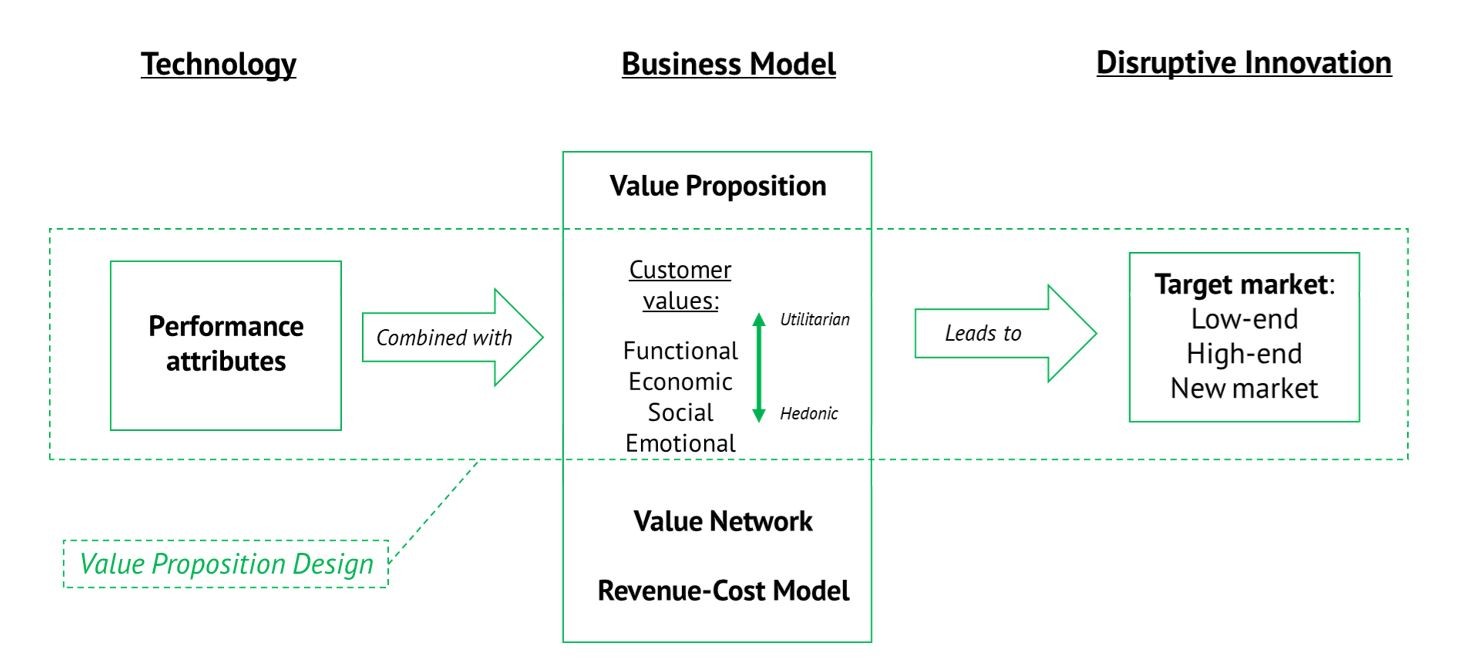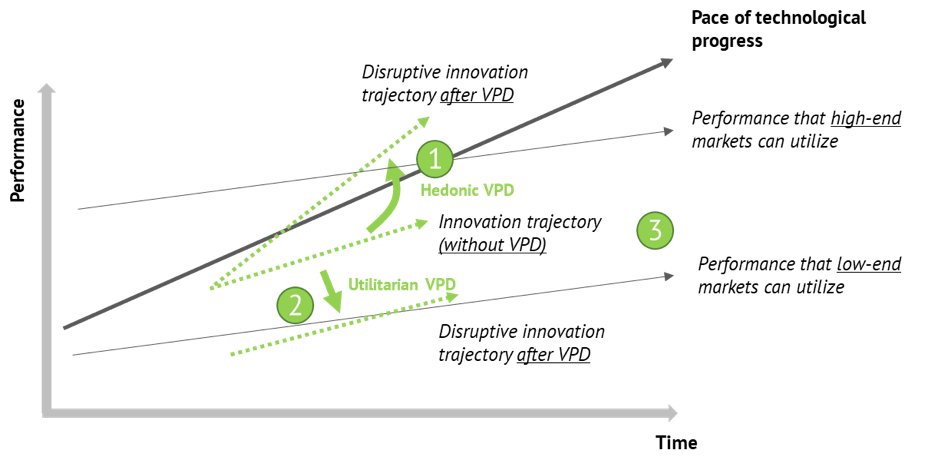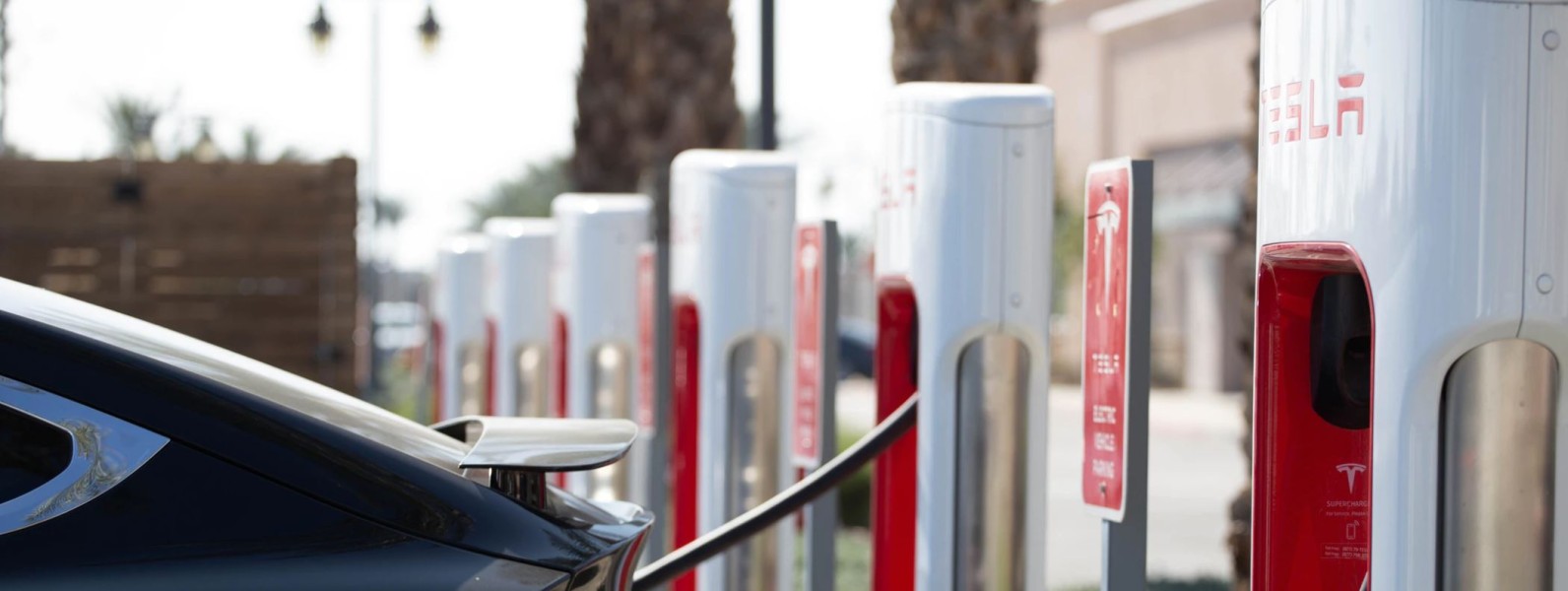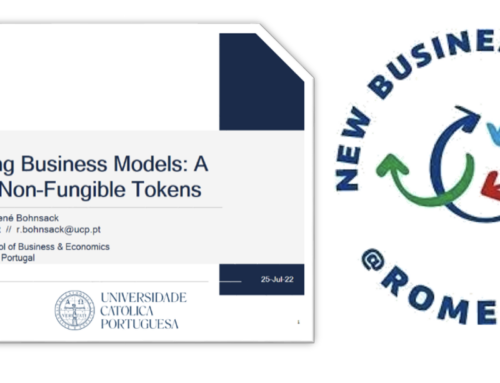New-to-the-world sustainable technologies often suffer from slow adoption in the market. Think, for instance, about electric cars which are often said to disrupt the market, yet they are (still) only adopted at a slow pace. One reason is that customers fail to appreciate the added value sustainable innovations create compared to existing alternatives.
Management scholars have for long argued that the adoption of a new product or service by customers is, among other factors, strongly determined by the business model. A business model describes what a firm offers (the value proposition), to whom (the target market), how it creates the offering (the value network), and how it makes money (the revenue-cost model). The business model is therefore the link between the technology and the customer (see below an illustration).
Value Proposition Design for Sustainable Technologies

In the context of sustainable technologies especially the value proposition as part of the business model is relevant for understanding why customers are adopting a product. In a previous study (see Bohnsack & Pinkse, 2017 in California Management Review) we have shown that firms use specific tactics to design attractive value propositions for electric cars. Yet, this is more challenging than it sounds and the study found that most tactics are actually not successful.
Consequently, we were curious to understand the underlying mechanisms of value proposition design, specifically how the composition of features of a value proposition impacts the disruptive potential of a novel sustainable technology.
Fortunately, we were part of an R&D project on electric car charging technology together with internationally renowned firms. Collaborating with these firms gave us the opportunity to explore the mechanisms of value proposition design. The results of this study were recently published in the Journal of Cleaner Production. The charging technology is called Vehicle-to-Grid (V2G) and allows electric cars that are connected to the grid to charge and discharge electricity. This is valuable because an owner of an electric car could use the battery of the car not only for driving but also as an emergency power source at home during power outages or to trade electricity (i.e. charging when electricity is cheap and discharging when it is expensive; it is worth noting that the price of electricity can change significantly during one day).
While this sounds great in theory, in practice V2G technology faces not only technical but also social barriers that are difficult to overcome. This provided us with an ideal setting to study the impact of value proposition design. We designed three different value propositions for V2G with the help of industry experts and focus groups. Subsequently we conducted a survey among Dutch car drivers to test the attractiveness of each of these three value propositions: The affordability-focused value proposition that stressed utilitarian values and attracted new and low-end markets. The performance-focused value proposition that emphasized hedonic elements was appealing for high-end customers. And, last, the combined value proposition – a jack of all trades – that combined utilitarian and hedonic values.
Disruption Pathways Influences by Value Proposition Design (see explanation in text below)

Our findings suggest that value propositions should be either designed to emphasize hedonic values (e.g. being rare, superior performance) which can drive high-end disruption (see arrow 1 in the Figure), or designed to stress utilitarian features (e.g. good value for money, ease of use) which can stimulate low-end disruption (see arrow 2 in the Figure). We found that a value proposition that combines hedonic and utilitarian features is unlikely to be successful and thus not recommended (point 3 in the Figure).
The suggested framework explains the missing link between technology and its commercialization, demonstrating that an innovative value proposition for a sustainable technology can accelerate market disruption. This framework can be helpful for managers to test different value propositions for a technology to target different markets – low-end or high-end – and to anticipate the performance for respective target markets.
For the full paper follow this link: (https://www.sciencedirect.com/science/article/pii/S0959652620300652)
Cite: Khan, S. A., & Bohnsack, R. (2020). Influencing the disruptive potential of sustainable technologies through value proposition design: The case of vehicle-to-grid technology. Journal of Cleaner Production, 254, 120018.






